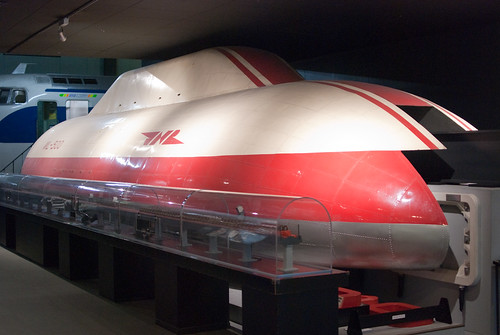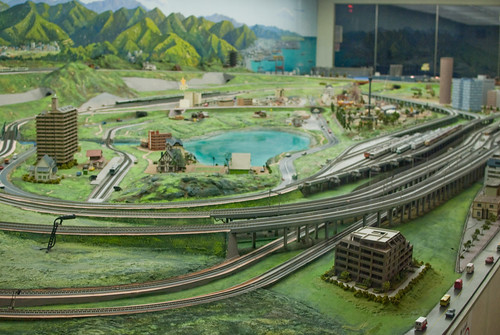H being the transit geek that he is, the Modern Transportation Museum was high on his list of places to visit. Fortunately for us, we still had another day on our Osaka Unlimited Pass and it included 20% off of admission to the Transport Museum.
From the guesthouse of the Taiwanese lady, we hopped onto the Chuo Line [中央] at Hommachi [本町]Station and rode the subway to Bentencho [弁天町]Station. A very quick ride at ¥230.
Originally, we thought that breakfast was included in our accommodation at the guesthouse, but we found out that it wasn't the lady at the guesthouse explained that it cost extra to have food included. This differed from what N's travel book and the website had suggested. N said that it was probably because she hadn't looked at the website for a few months. We weren't originally expecting to stay at the guesthouse; it was a last-minute addition to our itinerary.
So without breakfast in our tummies, we promptly stepped into a McDonald's right by Bentencho [弁天町] Station. It was still fairly early in the morning and there were a lot of teens in their school unis taking in breakfast before heading to class. McDonald's in Japan has such a dizzying array of choices for their meals. H had a Salad Marinade McMuffin with Cafe au Lait (H loves Japanese McD's cafe au lait). N had a regular Sausage McMuffin with juice in a Tamagotchi cup.
After a quick bite, we were first in line for the museum this rainy rainy day. There was a lot on display at the Modern Transportation Museum. The museum is divided into many rooms that are all to the left of the main hallway. The rooms are more like sections because there are no doorways to go through.
The museum starts oddly enough with a section about the technology of tomorrow. There is a large magnetic levitation prototype on display and some smaller models of the Shinkansen [新幹線], Japan's famous bullet train. Then after visiting the future, you step back into the past to the birth and growth of the railway in Japan. No shortage of dioramas here.
Then you come across an interactive section where you can control some of the models on display. They obviously made the place accessible to preschoolers because there was a section in the middle of the interactive models where little kids could sneak in and pop there heads up in a bubble. We totally lucked out because a preschool was on a field trip to the museum. The kids made for some fun candids.
In another section, they focused on the current "rolling stock" or trains of the Kansai region. They had displays for each major railway company operating in the area. There was a lot to look at, but not everything was in English. I'm sure H would have spent a whole here if he could.
Along the back of the sections, there was a life-size mock-up of a Shinkansen train complete with a drivers' cabin. You could try your hand at operating a train or take your chances as "rail kill" in front of the bullet train.
All the way at the very end of the museum, just past the one section on non-train transportation, there was the giant Model Train Panorama Room. Did I say the Japanese love their dioramas and miniatures. This was a large miniature world of rail just behind a large number of windows. It was impressive. We were lucky we beat the kids into the room; otherwise, we would have had to fight for spots along the glass and with their fingerprints all over the place. This is one of those places that H wishes he had an ultra wide angle lens for his camera.
After wandering around some of the other exhibits and the actual trains parked outside the museum, H had to visit the gift shop. After deliberating on what souvenir to purchase, he finally settled on two small model trains. One was a maroon Hankyu [阪急] train like one we had ridden on our way to Arima Onsen [有馬温泉]. The other was the Narita Express, which we had ridden back in 2006 to get us from the Narita Airport to Shinjuku [新宿]in Tokyo. Soon enough, it was time to get going again. Next station: the Osaka Museum of Housing and Living.
Sapporo Cityscape
3 years ago







No comments:
Post a Comment